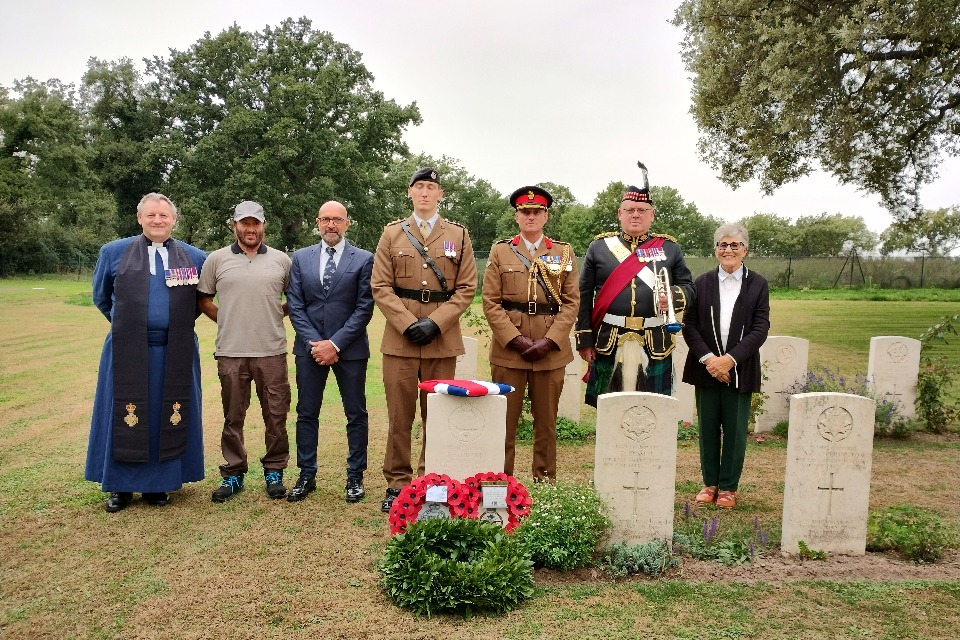The rededication service for Trooper (Tpr) Frederick Stobart was organised by the MOD's Joint Casualty and Compassionate Centre (JCCC), also known as the 'War Detectives'.
The service was held at the Commonwealth War Graves Commission's (CWGC) Bolsena War Cemetery in Italy this afternoon (16 October).
Frederick Stobart was born in Sunderland in 1916. He lived with his maternal grandparents for some of his childhood, but no records exist to tell us about his young life or schooling.
He joined the Army in 1935, listing his previous occupation as a steel grinder. He served at home, and in India during the years immediately before war broke out in 1939, and then joined the British Expeditionary Force in May 1940. By August 1940 he was in the Middle East, and he remained there until June 1943, when he was sent to take part in the invasion of Italy. He appears to have been captured around Tobruk in North Africa in late June 1943 and to have become a prisoner of the Italians at Camp 54 at Fara in Sabina, in the Lazio region of Italy.
In September 1943 when Italy capitulated, many prisoners found themselves without guards and took the opportunity to escape, Stobart was one of these. He travelled north, with fellow escapee, Pte Robert Quinn of the Durham Light Infantry, into the hills where they relied on local people for help. Unfortunately, their freedom was short-lived, and they were recaptured by the Germans within a few days. According to contemporary reports, both men were shot whilst trying to escape from a transport taking them to a new camp. Quinn was hospitalised but Stobart died.
Stobart was buried in a civilian cemetery at Monte Libretto by two German soldiers, a local policeman and four other prisoners. The notes recorded on the grave register show that there were no documents or means of identifying the body, and that the other prisoners burying him did not seem to know him. After the war Stobart's remains were recovered and moved to the war cemetery at Bolsena where he was buried as an unknown casualty of the 1939 - 45 war, with a date of death in September 1943.
Recently an independent researcher submitted evidence to the CWGC hoping to have located the final resting place of Tpr Stobart. The research included excerpts from a Red Cross interview with Stobart's fellow escapee Pte Quinn which was conducted whilst he was a POW in hospital. Quinn had described the escape and what had happened to his Stobart, without naming him. It was his testimony along with other supporting documents which were crucial in proving this case. The researcher's evidence was reviewed and extra work conducted by the National Army Museum and JCCC which concluded that now, 80 years after his death, it is possible to clearly identify where Tpr Stobart is buried.

The military party, representatives of the CWGC, and the researcher who submitted the original identification case for Tpr Stobart, stand behind his headstone (Crown Copyright)
JCCC Caseworker, Alexia Clark, said:
It has been a privilege for me to have been involved in restoring Tpr Stobart's name to him, and to have organised the service of rededication for him today. I am grateful to the researcher who submitted the original evidence and thus started this process off, and to Tpr Stobart's military family for attending today to honour his sacrifice.
Director for Central and Southern Europe at the CWGC, Geert Bekaert, said:
We are honoured to now be able to commemorate, by name, Trooper Stobart. It is a privilege to care for his grave and all those that lie here at Bolsena War Cemetery, in perpetuity.






